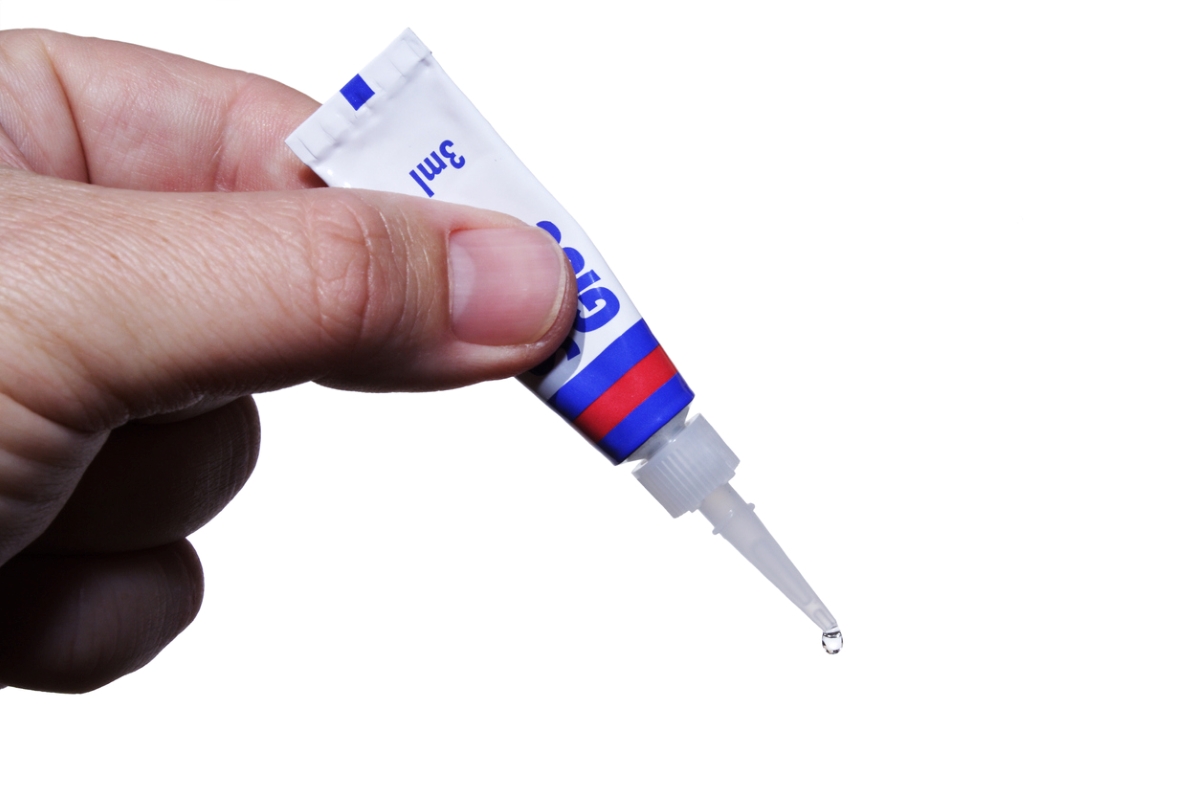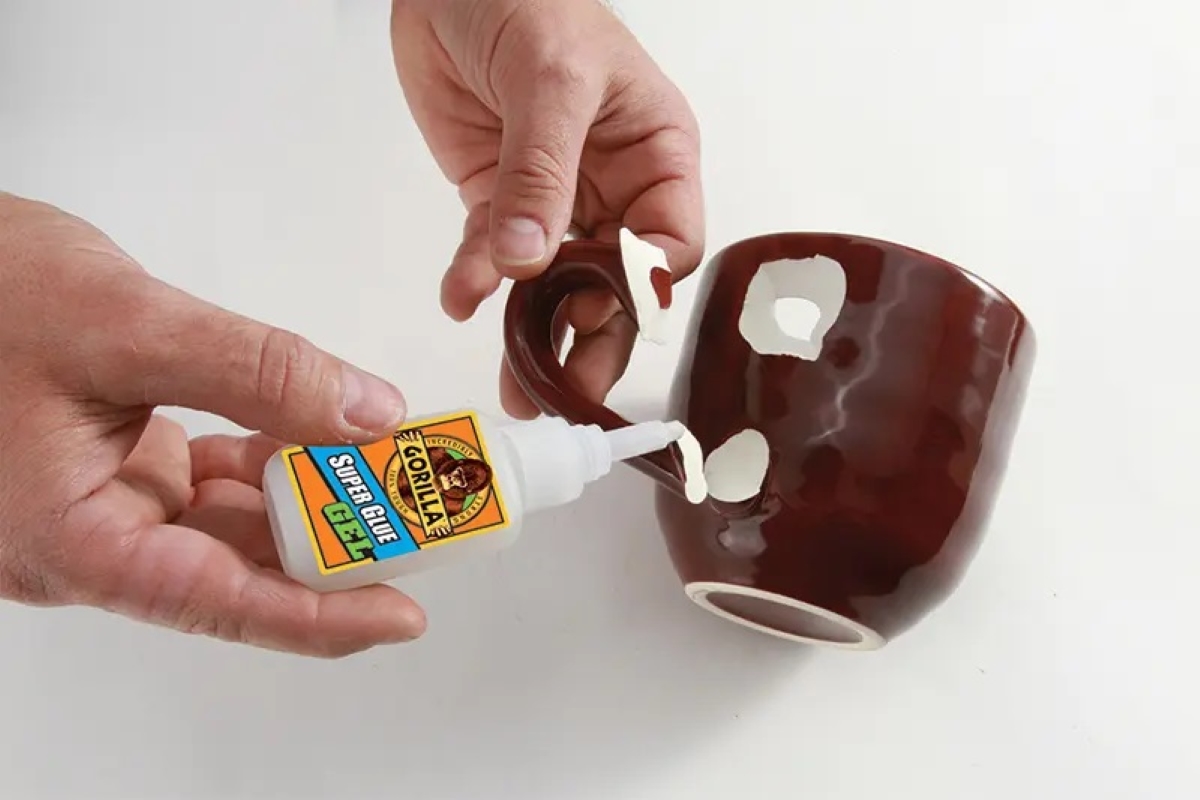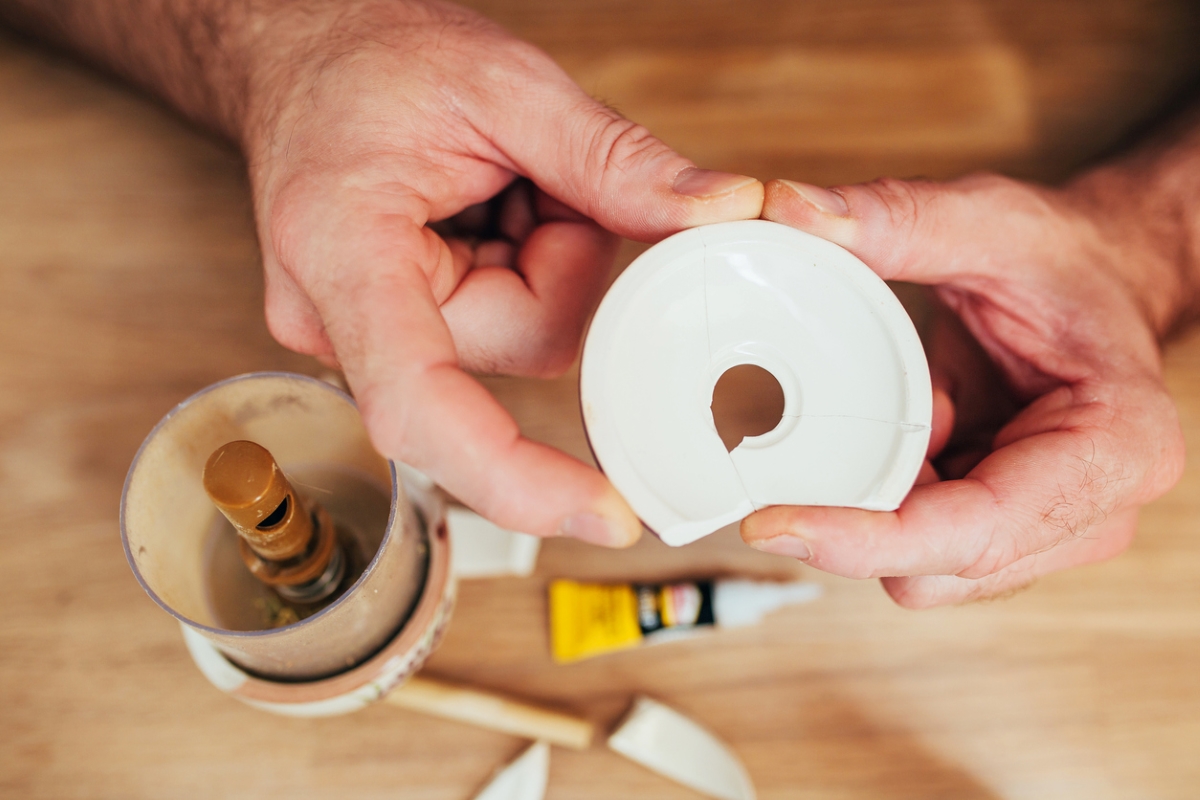

We may earn revenue from the products available on this page and participate in affiliate programs. Learn More ›
Q: The handle just broke off one of my favorite china teapots. I want to try fixing it with super glue, but I don’t know how long I should let it set. How long does super glue take to dry?
A: Super glue is a strong adhesive that forms a nearly permanent bond. Trying to remove dried super glue is not an easy task, so it is always important to protect your work area and be careful when using it for a repair or craft project. Unfortunately, there isn’t a clear-cut answer to the question, “how long does super glue take to dry?” The product packaging will typically offer the most accurate dry times based on the specific formula of super glue that you’re using.
However, several factors, such as the types of materials you’re trying to bond together, the amount of super glue you use, and the ambient conditions can all impact dry times. Read on to learn more about how these various conditions can affect how long super glue takes to dry.
RELATED: Solved! How Long Does Wood Glue Take to Dry?
Know the difference between setting, bonding, and curing.
While you may hear them used interchangeably, setting, bonding, and curing each have distinct meanings. Super glue set time may be only a few seconds, as this simply refers to how long the glue takes to adhere to various materials. However, just because it feels like the glue is starting to work, it doesn’t mean that it is fully dry.
Next, the glue must start to form a bond between the two materials to hold them together. This step also occurs relatively quickly, often in just a few minutes. Curing is the final stage of super glue dry time that ensures the two materials are permanently stuck together. Curing takes much longer, often up to 24 hours.
The formula plays a factor in super glue dry time.
Super glue is sold in gel and liquid forms. The specific formulation and ingredients can impact drying times. So, what is super glue made of? The super glue ingredients of both liquid and gel formulas include cyanoacrylate, a type of acrylic resin. However, there are a few key differences between each of these formulas.
- Liquid super glue: If you’re looking for a quick dry super glue, then a liquid formula may be the best choice for you. This type of super glue is often used to get inside horizontal cracks and prevent them from becoming deeper. However, liquid super glues can be very runny, which can make precise application more difficult. It can also increase the chances that you’ll make a mess as you’re working.
- Gel super glue: Super glue gel formulas are thicker, which makes applying them easier and less messy. You’re in greater control, allowing for more precise applications. However, these formulations take longer to dry than their liquid counterparts.

It depends on what you’re gluing.
Drying times will also vary based on the types of materials you are trying to glue together. Super glue is best suited for use on porous materials, such as wood, ceramics, fabrics, and cardboard. It will dry fastest when applied to these types of materials.
While you can use super glue on non-porous surfaces, such as glass or metal, it may not work as well and will take longer to dry. In many cases, super glue will not form a strong bond when used on wet or oily surfaces and some types of plastic. However, if you want to remove super glue, you will have better luck getting it off of a non-porous surface.
RELATED: The Best Glues for Cardboard
Applying too much super glue can extend the dry time.
You don’t need to use much super glue to create a strong bond. In fact, if you use too much, drying time might be increased. Moreover, too much super glue could decrease the strength of the bond or cause the glue to spread over the sides of your project.
When working with super glue, use very thin layers. Check the recommendations on the packaging, but you’ll typically only need about one drop of super glue on each square inch of the surface you’re working with.
Ambient conditions can affect how long it takes super glue to dry.
Super glue dry time can also vary based on the temperature and humidity levels. While extremely hot temperatures can increase dry times, super glue dries faster in warm temperatures. Humidity, too, impacts dry time. When more moisture is present in the air, super glue will also take longer to dry. Therefore, a warm environment with low humidity levels will offer the optimal drying conditions for super glue.
How to Make Super Glue Dry Faster

If you want to decrease super glue drying times, there are a few things you can try. Keep in mind that these measures can only do so much, and that you’ll be best to follow the manufacturer’s directions to ensure that the glue has fully cured before handling the item and potentially breaking the bond.
Clean surfaces before applying super glue.
Before working with super glue, it is essential to clean the two surfaces. Dust or dirt can have a negative impact on the strength of the bond. Use a damp microfiber cloth or rubbing alcohol to clean the surfaces. Then let them dry fully before gluing them together.
Clamp the pieces together until the super glue cures.
After you’ve applied super glue, use a clamp to secure the two pieces together until the glue cures. This will help prevent the pieces from sliding around and will ensure that they stay in the proper place. If you’re working with something flat, placing a heavy book over the two objects can also help ensure a tighter seal.
Increase airflow in the room.
Super glue will dry more quickly when there is sufficient airflow in the space. Open a window or turn on a fan or two to keep the air moving.
Use a hairdryer.
Warm air can also speed up dry times for super glue. Using a hairdryer—on a low heat setting—can provide enough warmth to help the glue dry more quickly. Just don’t keep the hairdryer pointed at the same spot for too long because it could cause the glue or the materials you’re bonding together to overheat.
